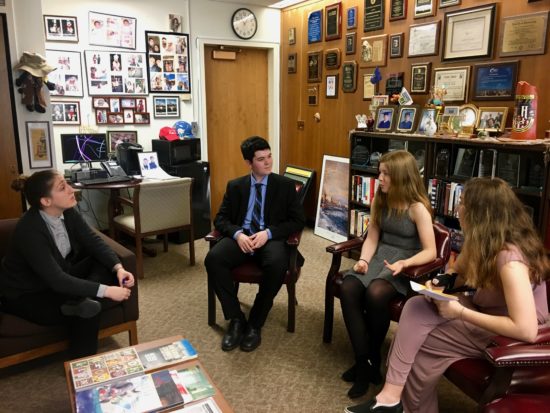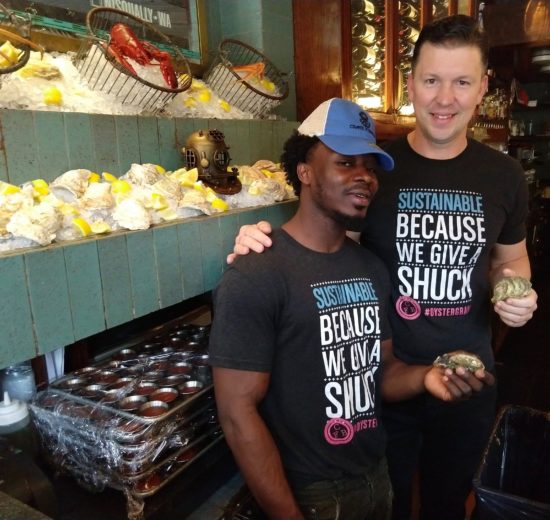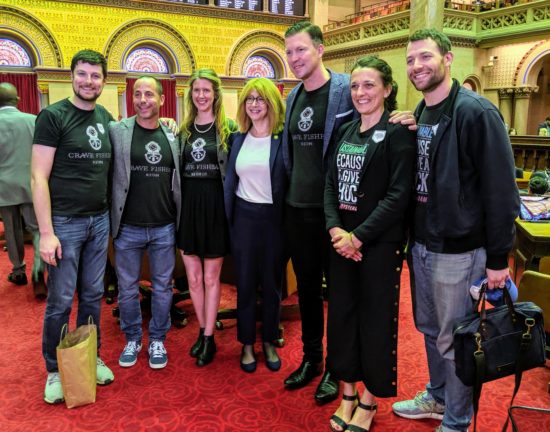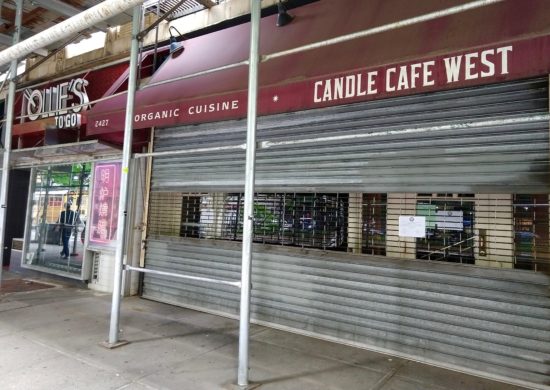
By Joy Bergmann
Whether you delight in slurping down a dozen briny beauties or refuse to ingest bivalve mollusks, oysters deserve your attention.
Turns out, oysters are aquatic superheroes.
As “filter-feeders,” oysters remove pollutants like nitrogen from waters as they eat, preventing oxygen-depleting algae blooms that can create “dead zones.” A single oyster can clean more than 24 gallons of water a day. Oyster reefs attract hundreds of species and can serve as buffers, reducing the power of damaging waves during storms.
Problem is: oysters all but disappeared from New York Harbor during the 20th century. Back in Henry Hudson’s day – 1609 – our waters teemed with over 200,000 acres of oyster reefs, but over-harvesting, pollution and dredging of the harbor floor wiped them out.
Today, however, area students, businesspeople and community organizations have vowed to kickstart a massive comeback for local oysters.
“Oysters have so much power!” says Ali Letchford, 15, a ninth grader at West End Secondary School [WESS], one of eight WESS students who spent Monday in Albany lobbying lawmakers to co-sponsor Assemblymember Linda B. Rosenthal’s bill A0065 establishing a tax credit of up to $1,000 for restaurants that recycle oyster shells.
The end goal? To assist the Billion Oyster Project [BOP] in restoring thriving ecosystems to New York waterways by rebuilding the oyster population, especially around New York Harbor and the Hudson River.

Letchford and her classmates got wise to oysters as an environmental boon way back in sixth grade. “We found it to be a very interesting way to improve the condition of our local waters,” she says. They started brainstorming ways to assist BOP in distributing a billion live oysters around New York Harbor by 2035.
Together with WESS science teacher Emily Hollyday, they hit upon a big idea: Incentivize more NYC restaurants to recycle their oyster shells with BOP by offering a state tax credit. [A single empty oyster shell can host up to 20 oyster larvae as they continue their development. And New Yorkers consume millions of oysters every year.]
“I was struck by the students’ passion and knowledge,” remembers Rosenthal. “We immediately began working to introduce the legislation and plan advocacy around the issue.”
Known around WESS as the Oyster Bill Club, the students have proven to be indefatigable activists.
“I’ve been stunned with how these students have persisted with this project,” says Hollyday. “They’ve found that government doesn’t move quickly, but they still give up their lunch hour every Monday to work on it, make phone calls. And as they get older, they’re finding new ways like Twitter to help them pursue their goals.”

Allies like Brian Owens, owner of Crave Fishbar at 428 Amsterdam (81st Street) and 945 2nd Ave (50th Street), have been happy to rally legislators alongside the teens. Owens and several Crave employees also traveled to Albany on Monday, serving up free oysters along with their passion for restoring local waterways through BOP.
“We sell 20,000 oysters a week between the two restaurants,” says Owens. “In three years we’ve donated over 15 tons of shells.”
The effort is more than good-hearted; it’s good business. “Even if I didn’t care about the community, the environment, the waters, it’s still a smart business decision not to put those shells on the street (and in landfills). It saves a ton of money. I’m saving hundreds a month on carting (garbage pick up) fees.”
Trucks from Lobster Place – a seafood purveyor and BOP partner – pick up the shells three times a week, he says. “They’re already in the door of many seafood places and have the trucks. It makes sense.”
Owens says the bill’s passage will help make more city agencies and restaurants aware of BOP and the tax credit might “motivate the little guys, say an Irish bar that serves oysters, motivate them to start recycling oyster shells.”
He’s optimistic about Billion Oyster Project’s long-term prospects. “As long as people keep eating oysters the way they do, we’ll get to that number.”

Madeline Wachtel, Deputy Director of BOP, says the initiative has already diverted 1.3 million pounds of oyster shells from landfills and to the harbor; 28 million oysters have been planted. More than 6000 local students have worked as field scientists using BOP’s hands-on STEM curriculum. On the UWS, students have accessed active oyster restoration/research stations on the Hudson’s 70th Street pier and near the 79th Street Boat Basin.
“We’re really excited to support the students and Assemblymember Linda Rosenthal’s office in their joint work. We sincerely appreciate the time and energy it takes our restaurant partners to sort and collect their shells so that we can retrieve them and reuse them for reef habitat restoration,” says Wachtel. “We hope that the passing of the bill will help to divert more shell from the waste stream and offer restaurants some financial compensation for their part in the larger effort to restore habitat.”
Rosenthal says she hasn’t heard much opposition to the bill and is making it a priority. To those who argue a tax credit will cost the state money in tax revenue, she counters, “Oyster shell recycling is a far more cost-effective solution than any available alternative. (It will save) untold millions if the alternative is massive environmental mediation and brownfield clean up.”
Ali Letchford says the effort has fortified her interest in activism. “Before I did this I didn’t realize that people – especially people our age – were able to have this much of an influence on a state level,” she says. “I’m even more driven towards politics than I was before.”










How could anyone not eat oysters they are delicious
There were oyster carts on more corners than we have coffee carts today.
Very proud of these kids. Amazing mentality and dedication. We should all learn from them.
I truly applaud these youngsters and this project. My grandfather told me about fish in the Hudson. I was surprised, but wayyyyy back then, the rivers were not polluted.
Keep up the pressure on Albany. Maybe Andrew Cuomo has a brain after all!
If the Army Corps of Engineers could think this way instead of massive doors at the bottom of the river, at the harbor, that will kill the Hudson and any chance of natural and normal fish migrations, we’d be a lot better off. Reefs combat storm surges.